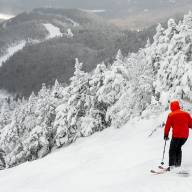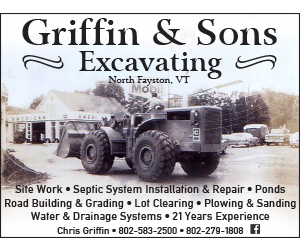By Jack Lentz
“A professional weed puller” is the phrase I used to describe my job to friends and family members who asked what I was doing this summer. To be more specific, I was “a professional weed puller” working in The Valley, with people who evolved from coworkers to close friends, with a community that appreciated and provided us with participation and nourishment, with a plant that taught me about resilience and patience, and for the cherry on top. . . goats!
For 11 weeks this summer, my day started with an hour-long car ride to the Mad River Valley. These unpaid, hour-long treks to work became one of my favorite parts of the job. Over the weeks on our commute, we picked up a pattern of seeing clouds that created barriers over the highway until we arrived in The Valley, which appeared in technicolor as all of the fog drifted away. The six of us professional weed pullers carpooled for most of the summer. At the start of this gig, we were complete strangers. Through many eight-hour days -- six hours in the field and two in the car -- our conversations strayed from our majors or where we are from to the point of hysterically making up stories since we seemed to already know most everything about each other and had to rely on made up narratives to keep us entertained. Our dynamic in the group seemed perfected and locked in by the second week of this experience, getting better with each commute.
Our field work was removing knotweed, a persistent invasive species, between Warren, Fayston, and Waitsfield. We spent a day in each town with two in Warren, which had the most sites. I enjoyed getting familiar with these locations and discovering my favorite parts of each. Warren is centered around a covered bridge and features the Warren Falls providing the perfect entry to the Mad River (allowing us to walk right in whenever we went on knotweed scouting adventures), and contained one of my favorite sites: Granville Gulf -- a long stretch of wildflowers and cliffs we maneuvered around to get to knotweed sites. Days spent in Fayston involved patches that were located on slopes, giving us a challenge before being treated to delicious Creemees that Andrea Henderson, the project’s chair from Fayston, graciously bought for us. Waitsfield contained the biggest field sites of the three towns, Lareau swim hole (where we often cooled off in on the super-hot days), and the goats that chomped down on knotweed as good, if not better, than we did.
Japanese knotweed, the plant I spent over 90 hours staring at this summer, is a difficult species to manage because it spreads through propagules on its rhizome (underground stem), versus plants that spread via seeds. By spreading through rhizomes, any notch on this plant (below ground and above ground portions) can turn into a whole new patch of knotweed with the underground stem pushing through the dirt as far away as 20 feet. When roots and rhizomes from this plant bump into each other they can create what we call “root balls,” which we find after using our force- or tools- to excavate. These large root systems lack root hairs so the soil around the plant is held very loosely, which is why banks filled with knotweed can fall in with a slow sweep of rushing water. While all of that is problematic enough for a plant that isn’t from here and restricts native species, it grows faster than any plant I have ever encountered. There are some sites we visited every single week that always had new knotweed up to my ankle, despite clearing it the week before!
To manage this, we tried various strategies; usually cutting and pulling. Pulling involved ripping the plant out of the ground (better than therapy) and setting it in a stack elevated to dry out. Cutting involved sickles or serrated-putter-like-tools to cut the stalks and stack them. Cutting reduces photosynthesis and therefore stresses the plant, so we often stuck to pulling since it is more efficient, allowing us to pull as much of the root/rhizome system out of the ground as possible. Another strategy first used this year were goats. Goats are known for eating just about everything. Our goat herd specialist set up paddocks around the largest fields of knotweed and tested how proactive goats were in managing knotweed. The paddocks were cycled across the field, with goats eating patches and patches eventually circling back to the spots they started at; already having tons of new growth to feast on again. The goats showed promising success in managing knotweed and seemed to be our connection to the community.
“Are you the goat people?” asked most everyone who drove past us as we were pulling down knotweed.
While the occasional person knew that we were working on managing knotweed, most people knew us because of our work with the goats. One of the other interns, Bella, and I took charge on the knotweed project’s social media accounts and used the hook of goats to gain traction on Instagram and TikTok. This effort worked and we were able to spread our management techniques and invitations to “pull parties,” with the people in the community. “Pull parties”/community workdays were a great part of this job where, every week, community volunteers from any of the three towns worked with us in the field, helping to pull knotweed. Seeing a community that is so involved with protecting the land gave me hope and courage that what we were doing was really bettering The Valley and taking a big step in bettering the planet.
For anyone considering a similar internship, the one piece of advice I have to offer would be to appreciate every single moment. Appreciate every long car ride, every person you meet, every community and location you get to observe and become a part of, every plant you see, and finally appreciate every opportunity you get to help the planet- no matter how big or small.
Lentz is a student at UVM.
You might also like













